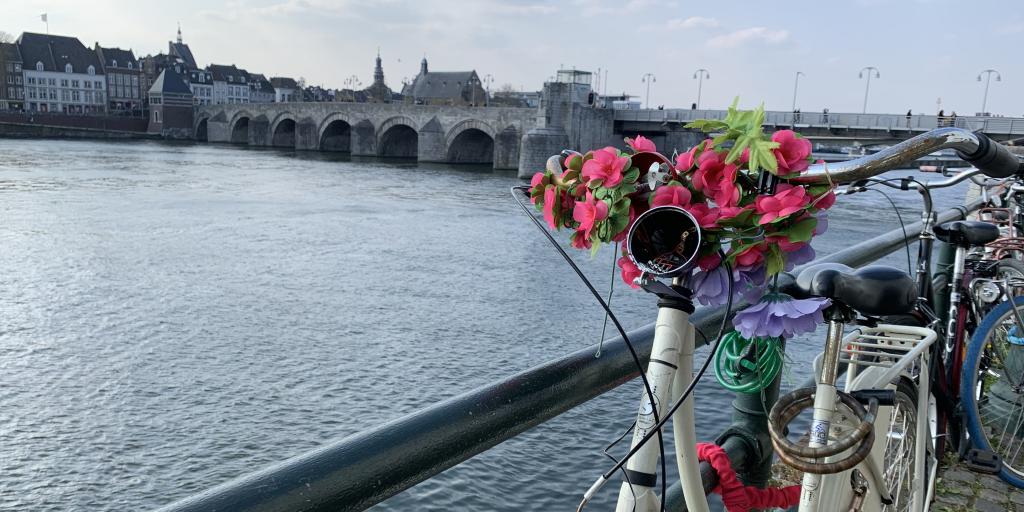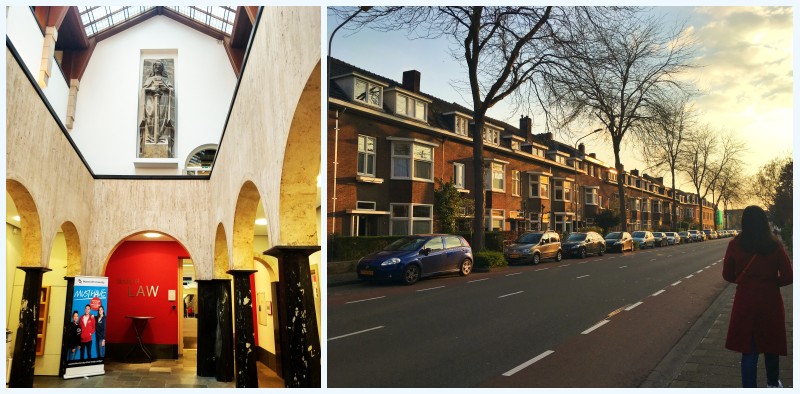On 11 April 2019 (local time) after a 10-hour-flight, a few hours of train and bus journeys, 13 students of the ‘Maastricht, Netherlands squad’ finally arrived at Maastricht University.
Due to the current limited number of bedrooms at the university student dormitory, Maastricht University rented a student apartment outside the campus for us. The Maastricht River divides the small town into east and west. The school is on the west bank of the river and the dormitory is on the east bank. Although a little bit far away, it takes about 15-20 minutes to travel from the dormitory to the school. On the bright side, we have the chance to bathe in the beautiful scenery of the Maastricht River every time we go to class. Our apartment consists of several single rooms, separate bathrooms, a common kitchen, a restaurant and a learning area. When we arrived, the manager of the apartment offered a gift box to everyone, with small gifts such as mugs, umbrellas, calculators and camping blankets which are all very thoughtful.

At the beginning of the next day, the team members set off together to the Maastricht University. The Law School held a simple welcoming ceremony for us. Then Natasha, a volunteer of the University, introduced us to the facilities of University and took us on a tour of the campus. The campus is not like our domestic colleges in that all the schools are located together in a specific area; each teaching building is independent and they are divided according to the different schools. The volunteer repeatedly said to us that although the school buildings are scattered, all the facilities are within walking distance, as Maastricht itself is small, convenient city. The libraries are all very conducive to conduct self-study, as each seat has a socket. The self-study area is divided. There are places where you can have group discussions, a quite area, as well as silence area. You are not allowed to use computers and other electronic equipment in the silence area.
Maastricht University is quite known for its PBL (Problem – Based Learning) teaching method. That is, the class focuses on practical goals to solve problems, to gain knowledge, and to enable students to understand the information fully. The limitation of students in each discussion class is basically 15 people, in order to enhance the students’ enthusiasm and initiative, as well as exercise students’ logical thinking skills and oral expression abilities.
After class, our team went to visit the centre of Maastricht near the university. Maastricht city is very beautiful and has a variety of local shops and a large number of buildings with historically-Dutch features. Dutch locals are very enthusiastic and friendly to students with Asian faces. Even when we on the bus, bus drivers will smile at us and say “hello”. The Dutch language is used on public transport as well as in shops and supermarkets. But the presence of English-language speakers in Maastricht is high, so we can use English to cope with our daily life basically.

There is no subway in the city. As the city is not so big, you would hardly see a taxi on the street. If you do see one, you will find it is expensive. The main means of travel in Maastricht is walking, cycling, and by bus. Rows of bicycles can be found everywhere in the city. In Netherlands bicycles are not only a means of transport but also a symbol of culture. In order to facilitate travel, many students on our team have rented bicycles as a means of transportation.

Members of our team are gradually adapting to the life in Maastricht and keeping up with the pace of study at the Maastricht University. It will definitely be an unforgettable learning and life experience!
Article submitted by WANG Chengyue, YANG Shujing, XIANG Shujin (CESL Double Master from 2017 intake)
Translated by ZHANG Shuyuan(CESL Double Master from 2018 intake)
Edited by Caoimhe Cotter
